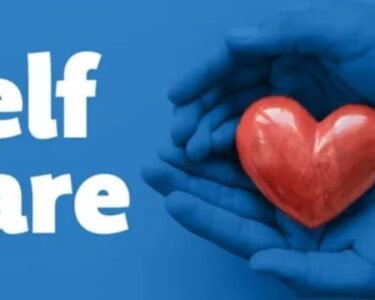Key Takeaways:
- Adopting a soft food diet is crucial for proper recovery and to prevent issues following a tooth extraction.
- A varied selection of nutritious, easy-to-eat foods can support your healing while maintaining adequate nutrition.
- It’s important to avoid hard, chewy, spicy, or hot foods to protect the area where the tooth was removed.
What Is Tooth Extraction?
Tooth extraction is a standard dental treatment that involves pulling a tooth from its socket in the jaw. This procedure becomes necessary for several reasons, including extensive decay, advanced gum disease, infection, or to prepare for orthodontic treatments such as braces. Knowing the type of extraction can help patients prepare for their recovery.
There are generally two main kinds of tooth extraction:
- Simple Extraction: This applies to teeth that are visible and easily accessible in the mouth. Typically performed with local anesthesia, the dentist uses specific instruments to gently loosen and lift the tooth out.
- Surgical Extraction: This is a more involved procedure used for teeth that are not easily reached, such as impacted wisdom teeth, or those that have fractured at the gum line. It often requires a small incision in the gum tissue and sometimes the careful removal of bone to get to and remove the tooth.
The Importance of Eating Soft Foods After Dental Surgery
Sticking to a soft food diet after any dental surgery, especially a tooth extraction, is absolutely vital for a smooth and effective recovery. The initial 24 to 72 hours after surgery are the most critical for the healing process. A blood clot develops in the vacant socket during this period, serving as a natural shield and laying the foundation for tissue regeneration.
Here’s why choosing soft foods is so important:
- Protects the Surgical Area: Soft foods need minimal chewing, reducing any strain on the delicate surgical site. This helps prevent accidental damage to the fresh wound.
- Prevents Dry Socket: Chewing firm or crunchy foods, or creating suction (for example, by using a straw), can dislodge the vital blood clot. This reveals the bone and nerves beneath, resulting in a painful issue referred to as dry socket.
- Reduces Pain and Swelling: Less effort spent chewing helps manage any post-operative pain and prevents swelling around the treated area worse.
- Supports Healing: By keeping the area undisturbed, soft foods allow your body’s natural recovery processes to work efficiently without interruption.
- Minimizes Infection Risk: Tiny food particles can easily get stuck in the open socket, potentially leading to a bacterial infection. Consuming soft, smooth foods greatly reduces the chance of this occurring.
List 50 Soft Foods to Eat After Tooth Extraction
Navigating meal times after a tooth extraction can be challenging, but a wide variety of nutritious and delicious soft foods are available to support your recovery. Here is a list of 50 soft foods to eat after tooth extraction:
- Applesauce
- Yogurt (plain, soft, or Greek)
- Mashed Potatoes
- Scrambled Eggs
- Smoothies/Shakes (without seeds/nuts)
- Pudding
- Cottage Cheese
- Soup (creamy, blended, or broth-based)
- Oatmeal/Cream of Wheat
- Refried Beans
- Avocado
- Mashed Bananas
- Pureed Vegetables (e.g., carrots, peas, sweet potatoes)
- Hummus (smooth)
- Tofu (soft/silken)
- Cooked Fish (flaky, e.g., cod, tilapia)
- Soft-Cooked Pasta
- Gelatin
- Custard
- Polenta
- Grits
- Soft Bread (crust removed, or dipped to soften)
- Ricotta Cheese
- Cooked Spinach (pureed)
- Soft Melon (cantaloupe, watermelon – no seeds)
- Stewed Fruits (e.g., peaches, pears)
- Rice Porridge (Congee)
- Soft Noodles (e.g., ramen, rice noodles)
- Baby Food (pureed fruits, vegetables, meats)
- Pureed Meats (chicken, turkey, beef, blended with broth)
- Silken Tofu Scramble
- Mashed Butternut Squash
- Creamed Corn
- Soft Pancakes/Waffles (no hard toppings)
- Deviled Eggs
- Blended Soups with Cream (e.g., cream of mushroom)
- Soft Cheese (e.g., cream cheese, Brie)
- Mashed Cauliflower
- Pureed Sweet Potato
- Soft-Cooked Green Beans
- Pureed Lentil Soup
- Soft Biscuits (dipped to soften)
- Soft Meatloaf (very tender, mashed)
- Soft Cooked Cabbage
- Soft Boiled Eggs
- Mashed Black Beans
- Tuna Salad (smooth, no crunchy bits)
- Chicken Salad (finely shredded, no crunchy bits)
- Popsicles (without fruit chunks)
- Ice Cream (plain, no nuts/candy)
Additional Foods to Eat After Tooth Extraction
Beyond the main list, consider these options for variety and nutritional support during your recovery:
- Bone Broth: Rich in collagen and amino acids, it can aid healing and is easy to consume. Studies indicate that collagen is essential in supporting the body’s natural wound healing process.
- Nut Milks (almond milk, soy milk): Good for hydration and provide essential nutrients like calcium.
- Fruit Juice (no pulp): Offers vitamins, but be mindful of sugar content.
- Coconut Water: Excellent for hydration and electrolytes, particularly beneficial during recovery.
- Protein Shakes: Specifically formulated liquid meal replacements can be invaluable for maintaining adequate nutrient intake post-surgery.
Simple Soft Foods Recipes to Try at Home
Preparing your soft foods allows for customization and ensures you’re getting optimal nutrition without irritants.
Creamy Avocado & Banana Smoothie
Mix one ripe avocado, one ripe banana, a cup of almond milk, and a small amount of honey or maple syrup until fully blended and smooth. This provides healthy fats, potassium, and easy energy.
Gentle Chicken & Vegetable Puree
Boil or steam 4 oz of boneless, skinless chicken breast until very tender. Cook soft vegetables like carrots and potatoes until mushy. Combine the chicken and vegetables in a blender with 1-2 cups of low-sodium chicken broth. Blend until completely smooth. Season lightly with salt if tolerated.
Soft Scrambled Eggs with Cheese
Whisk 2 eggs with 2 tablespoons of milk. Cook over low heat, stirring gently, until barely set and still very moist. Stir in 1 tablespoon of shredded mild cheese (like cheddar or mozzarella) until melted.
Soft Dinner Ideas After Dental Work
Dinner can be the trickiest meal after dental work, but these ideas offer comforting and nourishing options:
- Shepherd’s Pie (Mashed Potato Topping): Use a very tender ground meat mixture (e.g., ground chicken or turkey) and top with a generous layer of creamy mashed potatoes. Ensure the meat mixture is finely cooked and not chunky.
- Creamy Tomato Soup with Soft Bread: A classic, comforting choice. Ensure the soup is smooth and served lukewarm. Soak crustless soft bread in the soup to make it even easier to chew.
- Soft Fish with Pureed Sides: Baked or steamed white fish (like cod or halibut) flakes easily. Serve with pureed sweet potatoes or mashed cauliflower for a complete meal.
- Risotto: A creamy rice dish that is naturally soft and can be customized with pureed vegetables or soft cheeses. Cook until very tender.
- Congee (Rice Porridge) with Shredded Chicken: A savory and extremely soft dish, easily digestible. Shredded chicken can be added if very tender.
Foods You Must Avoid After Tooth Extraction
Avoiding certain foods is as critical as choosing the right ones to ensure proper healing and prevent complications. For at least the first week, and often longer depending on your dentist’s advice, steer clear of:
- Hard, Crunchy, or Chewy Foods: Chips, nuts, popcorn, crackers, raw vegetables, hard bread, tough meats. Such actions may knock out the blood clot or harm the recovering tissue. The American Dental Association provides guidance on post-operative care, including diet restrictions.
- Spicy Foods: Can irritate the wound and cause pain.
- Acidic Foods/Drinks: Citrus fruits, tomatoes, carbonated beverages. These can irritate the extraction site.
- Hot Foods/Drinks: Very hot soup, coffee, tea. Heat can increase swelling and dissolve the blood clot. Allow all foods and beverages to cool to lukewarm.
- Foods with Small Seeds: Berries with small seeds (like raspberries, blackberries), sesame seeds, and poppy seeds. These particles may become trapped in the extraction area and lead to an infection.
- Alcohol: Can interfere with healing and interact with pain medication.
- Using a Straw: The suction effect may remove the blood clot and result in a painful dry socket. Sip liquids directly from a cup.
FAQs
For how many days should I stick to soft foods after a tooth extraction?
Most dentists recommend a soft food diet for at least 3-7 days after tooth extraction, or until the extraction site has significantly healed and discomfort has subsided. Your dentist will give you personalized guidance depending on your individual situation.
Is it safe to eat solid foods 24 hours after tooth extraction?
It is generally not recommended to eat solid food within the first 24 hours. The initial healing and blood clot formation are crucial during this period. Stick to very soft, cool, or lukewarm liquids and purees.
What are the effects of eating solid food after a tooth extraction?
Eating solid food too soon can dislodge the protective blood clot, leading to a painful dry socket, or introduce bacteria to the wound, causing infection. It may result in discomfort and slow down the recovery process.
Can I drink coffee after a tooth extraction?
Avoid hot coffee for at least 24-48 hours. If you must have coffee, ensure it is completely cooled to lukewarm or cold, and do not use a straw. Caffeine can also sometimes increase bleeding.
Is ice cream good after a tooth extraction?
Yes, plain ice cream (without nuts, cookies, or hard candy pieces) can be soothing and provide some caloric intake. The coldness can also help reduce swelling. Consume in moderation.
Can I chew on the other side after tooth extraction?
Yes, it is advisable to chew on the opposite side of your mouth from the extraction site to minimize stress and protect the healing area.



